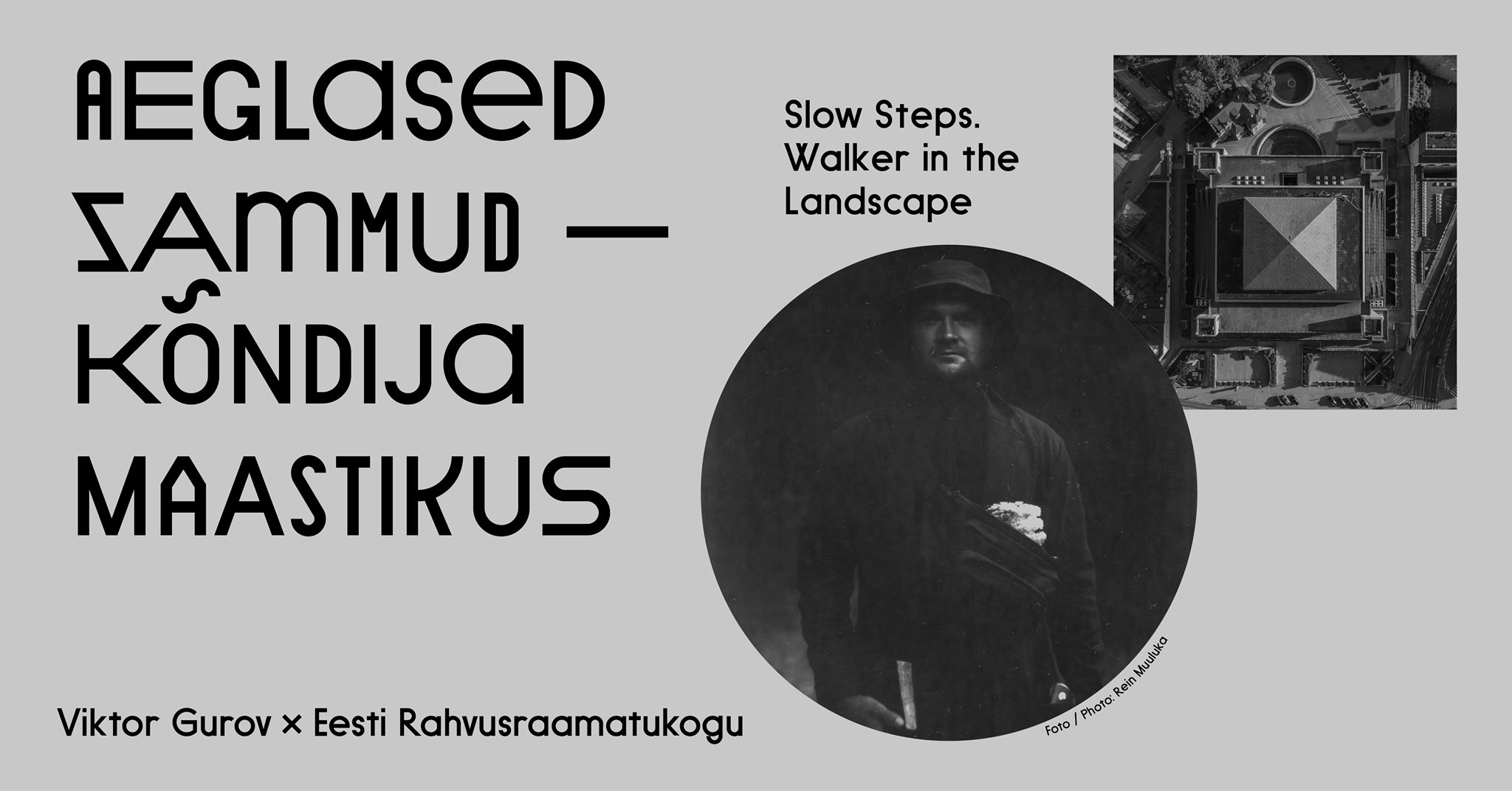The journalist and writer Kusta Toom lived as a hermit in a hut in the Salulaane forest in the village of Koruste near Rõngu, hiking constantly to centres of population to distribute his self-published magazines that were reproduced on a primitive printing press. Persistent and wilful wanderer Toom was not understood by his contemporaries, but he probably didn’t care about this. Viktor Gurov is an artist and a graphic designer who was intrigued by the lifestyle and interests of Toom almost a century later since they intersected with keywords in his own practices: continuous walking, recording observations, working with texts, designing and self-publishing. Although Gurov has thus far mainly been interested in urban landscapes, the abandoned and underused locations in public spaces, the tracks of Toom led him to the storage areas of the National Library of Estonia and to the thickets of southern Estonia.
Gurov was accompanied in his search for Kusta Toom by the photographer Rein Muuluka who has travelled for years with his ancient cameras to abandoned farms, capturing disappearing human landscapes. Muuluka’s photos of their joint journeys have been taken with a mechanical plate camera and Gurov sketched on paper first-hand impressions of their stops resulting in drawings that are delicate and fuzzy like many memories. In the National Library, the exhibition meanders like a walk through many significant locations and nooks, allowing the visitors to see this significant building before the renovations close it for many years. The stops on the way contain various layers: the publications and diaries of Kusta Toom, Gurov’s notes and sketches, and Muuluka’s photos. All these compositions are site-specific, using the architecture of the National Library along with specially designed benches and display cases.
In ancient times it was believed that the motion of the body reflects the motion of the mind. Long walks start to slow the mind and thinking adapts to the natural and effortless tempo of the body. The walk becomes a long musical composition – an andante – that does not lag behind or hurry ahead.1 Walking also has an important place in the history of culture: flaneurs and philosophers, artists and dissidents have used it as a catalyst and organiser of thoughts, instigator of conversations, a method for investigation and protestation. Besides his work in collections, Gurov uses walking as art to achieve through physical experience a closer contact with a headstrong character of Estonian art whose attitude and practices no longer make us frown in disbelief but seem very contemporary.
The project „Artists in Collections“ (2017 –, Maarin Ektermann and Mary-Ann Talvistu) creates a dialogue between creative professionals working with contemporary art and (small) museums throughout Estonia. This has resulted in thirteen collaborations that always start with the artist residing at the museum and getting acquainted with the collections, the everyday activities, and the community. The residencies will result in a site-specific exhibition, installation or an event that is accompanied by an audience programme. Collaboration with the National Library of Estonia allowed us to test the format with other types of memory institutions and to expand the dialogue of artists with our cultural heritage.
Viktor Gurov (b 1989) is an artist and graphic designer who has worked in the last years both on the project „Artists in Collections“ and with the Exhibitions Department of the National Library of Estonia. Taking on the role of an artist allowed him to proceed with his research-based artistic practices while continuing his everyday work, to examine more thoroughly the collections of the National Library and to use a different perspective to approach these materials.
Rein Muuluka (b 1991) is a photographer born in Tartu who has hiked since an early age. His practice focuses on photographing various abandoned locations, buildings and spaces using older cameras that demand a slower process. In 2016, he published the photo book „Abandonia“ that contains images and short stories of various abandoned places in Estonia like factories, schools, missile bases and churches. As part of a continuing project, he has photographed abandoned homes and farms in southern Estonia.
August Toomingas (1892–1973) was a journalist, writer and publisher who lived as a forest hermit near Rõngu. He led a wandering life, subsisting off odd jobs and studying book binding in publishing houses. He started writing in the media under the name “Kusta Toom” and used this name also in 1913 for his first work of fiction: a novel „Otsijad“ [„Seekers“] that had autobiographic elements. In the following decades, he published and distributed three magazines about art, science, and politics: „Aeg“ [„Time“], „Hääl“ [„Voice“] and „Tõrvik“ [„Torch“]. A selection of the magazines and texts he published and reproduced on a primitive printing press are also on display in the exhibition „Slow Steps. Walker in the Landscape“ at the National Library.
National Library of Estonia is an institution of information, science, development and culture in Estonia. It has operated under various names and in different guises since 1918. The tasks of the contemporary National Library according to the law are the collection, preservation and promotion of national cultural heritage and information, research and development, and making the resulting services available to the general public. The National Library also acts as a centre of culture where book and art exhibitions, conferences, concerts, theatre performances, film showings and other events are organised.
Big Thank you to: Kusta Toom, Rein Muuluka, Katri Kiik, Rene Mäe, Kea Susi, Tiina Kruup, Liina Siib, Rael Artel, Bruno Kadak, Sofia Fattahhova, Loora Kaubi, Andrei Ruzõrjov, Peeter Talvistu, Lauri Täht, Francisco Martinez, Alar ja Ethel Lillemägi, Alden Jõgisuu, Virge Loo, Merete Väin, Valge Kuup Studio, Printwise, Jaanihanso Siidrivabrik




